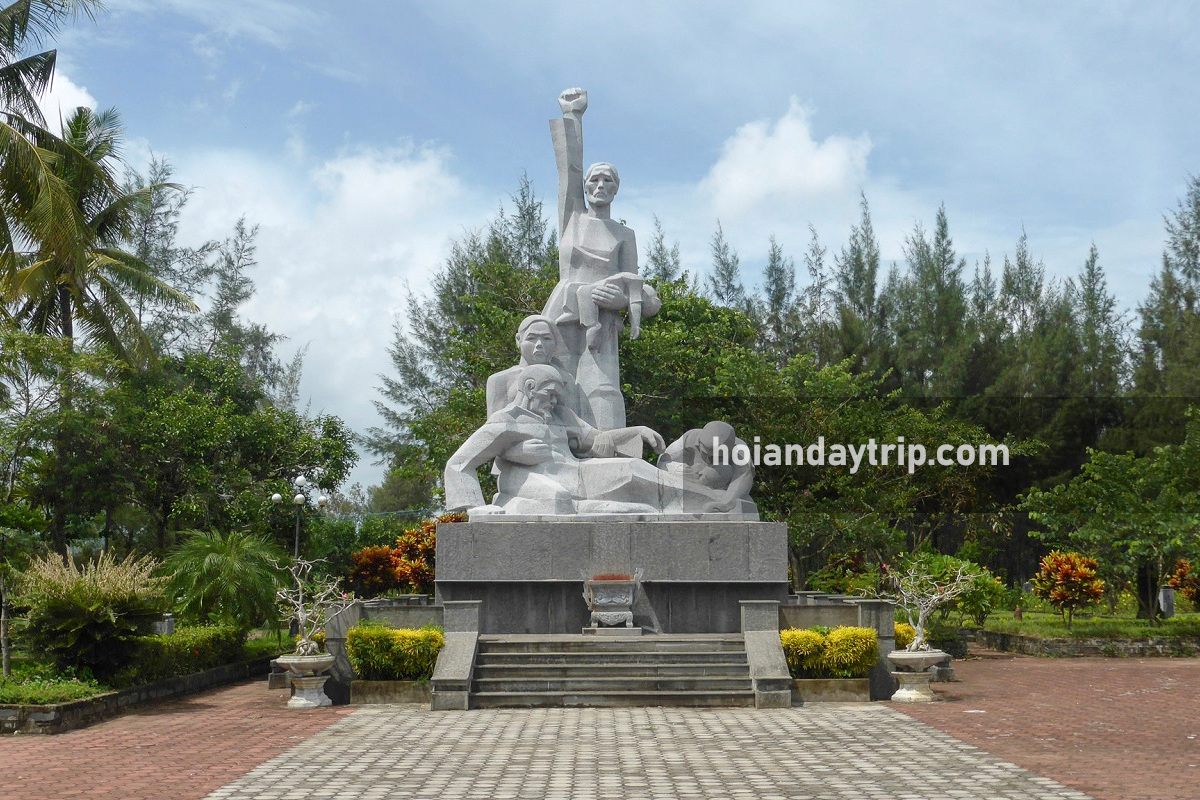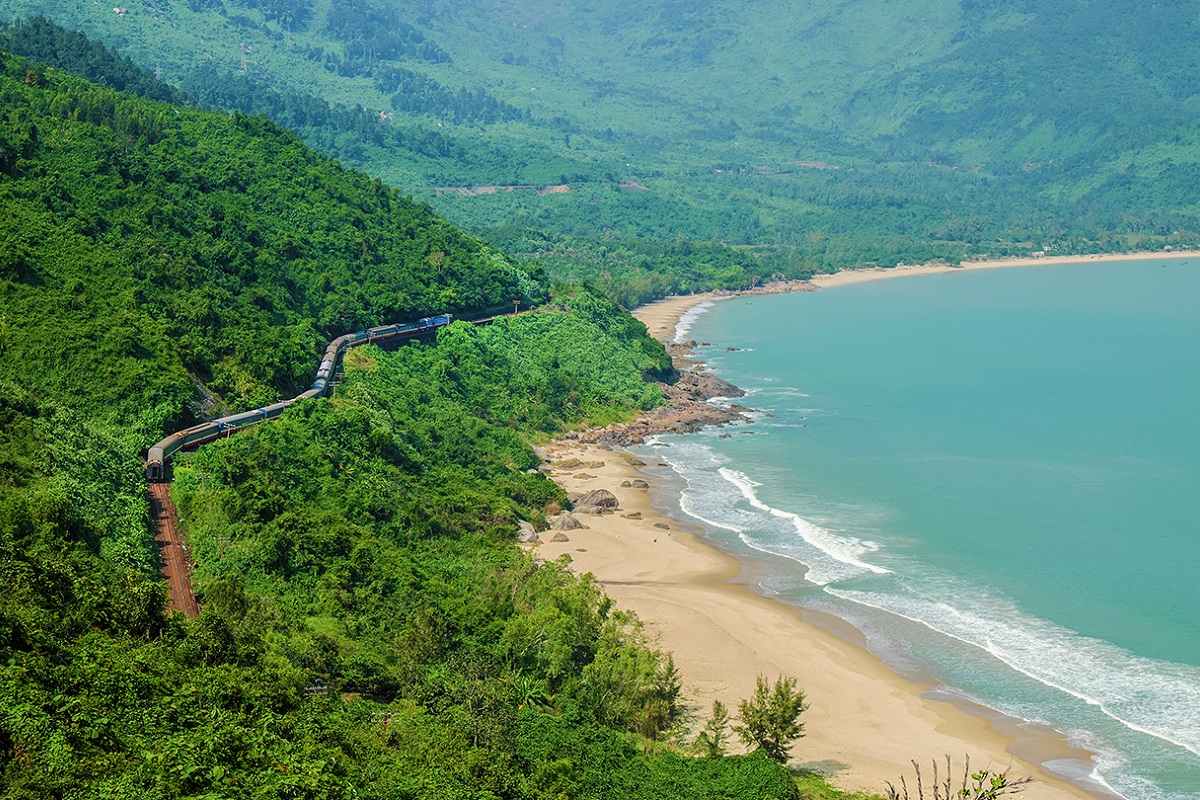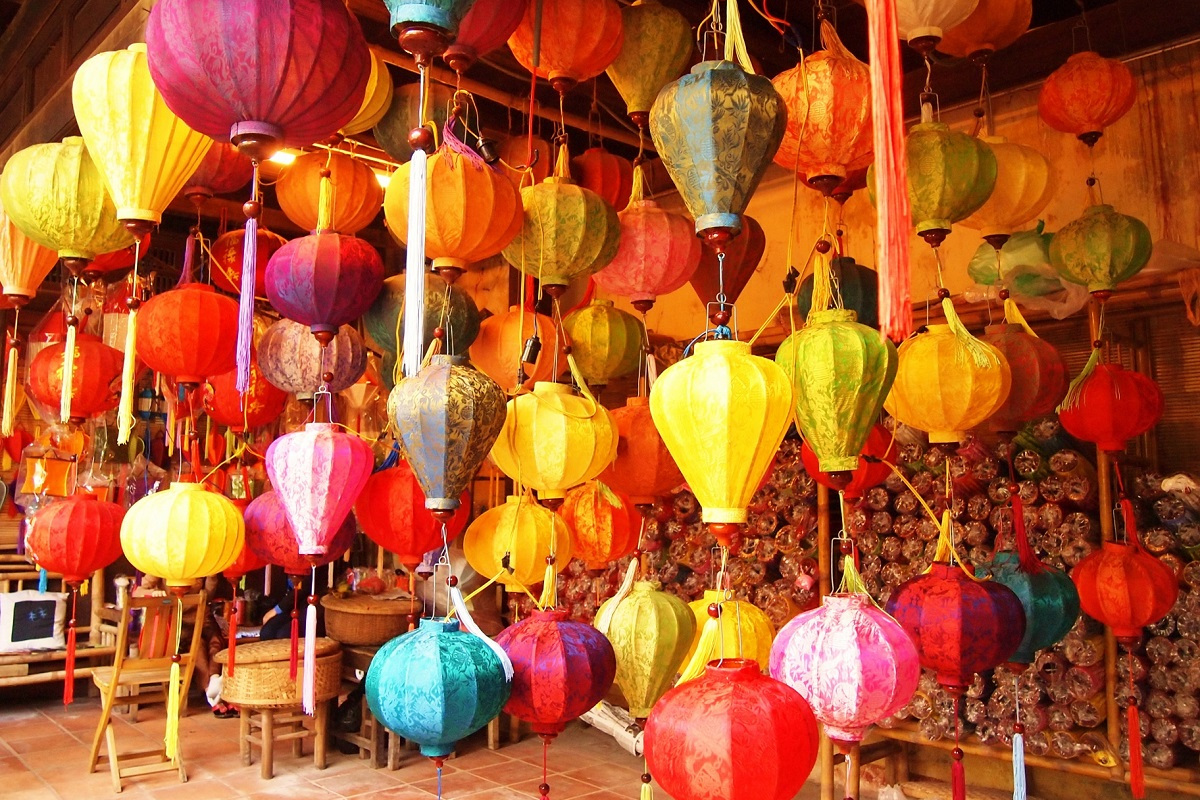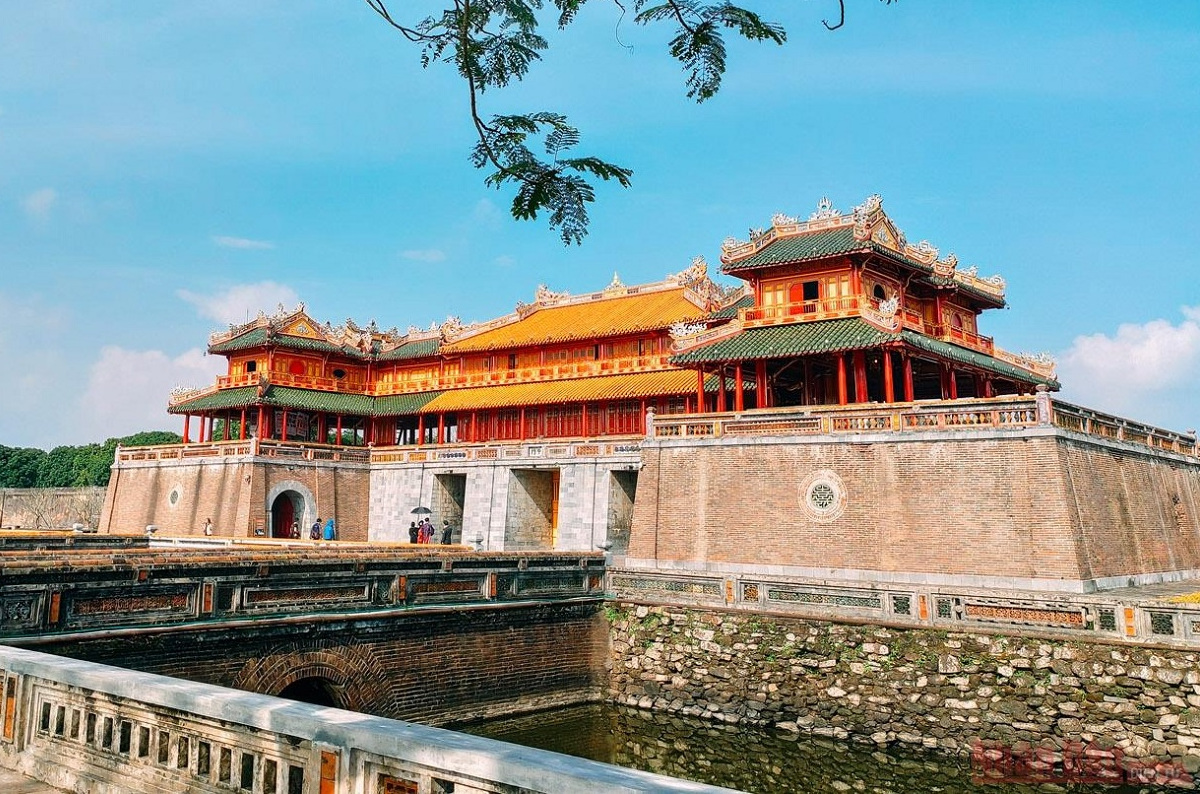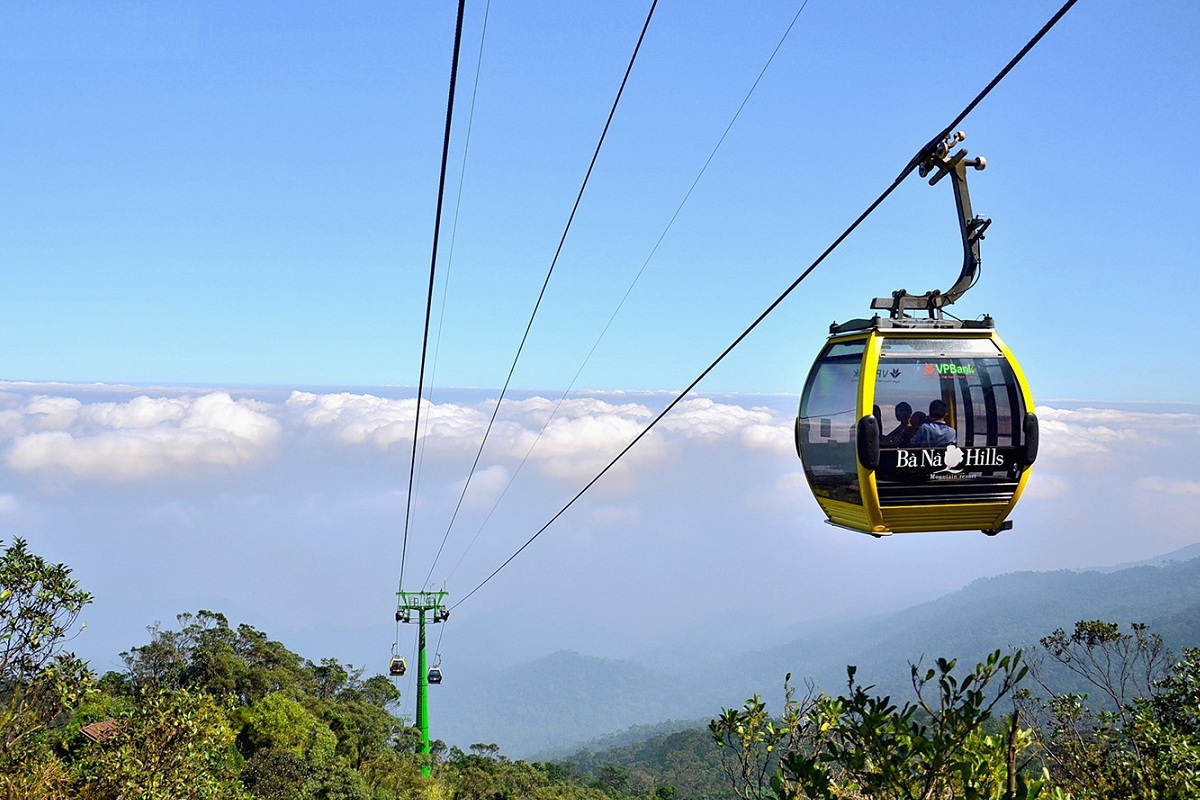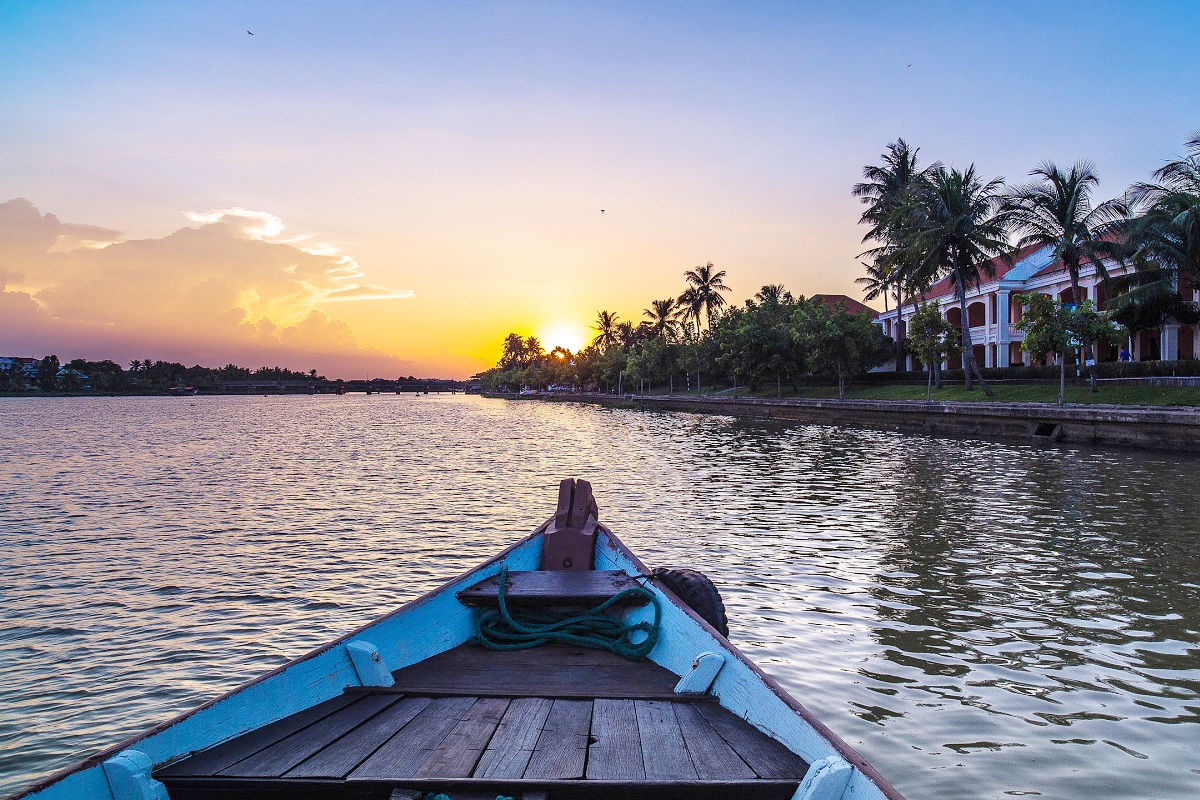Located by the Perfume River, Hue Imperial City and Forbidden City are the 2nd and 3rd walls of the Citadel, seat of Vietnamese power from 1802 to 1945. These are home of luxury-decorated palaces, residences, theatre and pavilions, for Nguyen emperor and his family. The king also added lovely landscaped gardens to relax and grand temples to worship his father and ancestors. Due to recent wars and fire, visitors only see a small part of it, instead of over 150 buildings like in the past. Now, international and local associations have been funding for restorations and reconstruction. In 1993, it became a Unesco world heritage site, as a part of the Complex of Hue Monuments.
The Imperial City of Hue is a must-see. In the busiest year, 4,3 million visitors purchased its entry and now, there are over 10,000 TripAdvisor users and 26,600 Google accounts left their reviews about it. City tours can exclude it in the itinerary. This article outlines what travelers need to know before visiting it.
See also:

Table of content
- 1 What are Imperial City and Forbidden Purple City?
- 2 Hue Imperial City History
- 3 Hue Imperial City Entrance Fee and Tickets
- 4 Times and Dress Code
- 5 Places to Visit in Hue Imperial City
- 6 Visit Route Recommended by Local Guides
- 7 Activities in Hue Imperial City
- 8 How to Get to Hue Imperial City
- 9 Getting around Hue Imperial City
- 10 Eat, Drink and Shop
- 11 Imperial City of Hue Tour
- 12 Hue Imperial City on Google Maps
- 13 Related Posts
- 14 Thieu Tri Tomb: The Peaceful Royal Tomb of Hue
- 15 Bach Ma National Park: Hiking, Trekking in Da Nang and Hoi An
- 16 Hue to Da Nang By Train: The Best Train Ride in Vietnam
- 17 Hue Royal Tombs: A Complete Guide and What is Best?
- 18 The Hue Abandoned Water Park (Thuy Tien Lake Waterpark)
- 19 Minh Mang Tomb Complete Visitor Guide
- 20 Tu Duc Tomb Complete Visitor Guide
- 21 Hoi An or Hue: Which is Better?
- 22 Lang Co Vietnam Travel Guide
- 23 Thien Mu Pagoda: Guide to Hue’s Most Famous Buddhist Temple
- 24 Perfume River Cruise: Guide to Best Boat Tour in Hue Vietnam
- 25 Tomb of Khai Dinh: The Most Unique Royal Tomb of Hue
- 26 Hai Van Pass Da Nang: Map, Route, Weather, History, Tour
- 27 Hue Imperial City and Forbidden City
- 28 Featured Tours and Experience
- 28.0.1 Bach Ma National Park Tour from Hue
- 28.0.2 Bach Ma National Park Tour from Da Nang/Hoi An
- 28.0.3 Hoi An Sunrise Fish Market Tour
- 28.0.4 My Lai Massacre Tour
- 28.0.5 Golden Bridge/Ba Na Hills & Hoi An Tour
- 28.0.6 Hoi An Instagram Tour
- 28.0.7 Ky Anh Tunnel & Tam Thanh Mural Village Tour
- 28.0.8 Da Nang to Hue Motorbike Tour with Hai Van Pass & Easy Rider (1 Way)
- 28.0.9 Hue to Da Nang Motorbike Tour with Hai Van Pass & Easy Ride (1 Way)
- 28.0.10 Hue to Hoi An Motorbike Tour with Hai Van Pass & Easy Rider (1 Way)
- 28.0.11 Hoi An to Hue Motorbike Tour with Hai Van Pass & Easy Rider (1 Way)
- 28.0.12 Tra Que Vegetable Village Tour with Cooking Class
- 28.0.13 Ba Na Hills Half Day Tour from Hoi An
- 28.0.14 Marble Mountain & Hoi An Day Tour from Da Nang Port
- 28.0.15 Hue Day Tour from Chan May Port with Lunch
- 28.0.16 Marble Mountain & Hoi An Tour from Chan May Port
- 28.0.17 Ba Na Hills/Golden Bridge Tour from Da Nang Port
- 28.0.18 Ba Na Hills/Golden Bridge Tour from Chan May Port
- 28.0.19 Golden Bridge Private Tour with Ba Na Hills & Lunch
- 28.0.20 Ba Na Hills Afternoon Tour with Golden Hands Bridge
- 28.0.21 Ba Na Hills Private Tour with Golden Hands Bridge
- 28.0.22 Ba Na Hills Half Day Tour with Golden Bridge
- 28.0.23 Ba Na Hills Early Morning Tour to Beat the Crowds
- 28.0.24 Golden Bridge and Ba Na Hills Night Tour
- 28.0.25 Golden Hands Bridge Tour In Sunrise or Sunset (1/2 Day)
- 28.0.26 Cam Kim Island Bicycle Tour From Hoi An
- 28.0.27 Cham Island Tour From Hoi An (Group Tour)
- 28.0.28 Cham Island Tour From Da Nang (Group Tour)
- 28.0.29 Hoi An Vegetarian Food Tour
- 28.0.30 Hoi An Evening Walking Food Tour with Local Foodie
- 28.0.31 Private Hoi An Basket Boat Tour (Shuttle Bus, Bicycle, Bike)
- 28.0.32 Half-day Am Phu Cave Tour (Private)
- 28.0.33 Hoi An Countryside Tour by Electric Car or Bike
- 28.0.34 Da Nang Tour Package From Singapore
- 28.0.35 Hoi An Evening Tour From Da Nang with Lantern Boat Ride
- 28.0.36 Hoi An Walking Food Tour Through Laneways
- 28.0.37 My Son Sanctuary and Hoi An Old Town Tour
- 28.0.38 My Son Day Trip From Hoi An including Marble Mountains and Basket Boat
- 28.0.39 Half Day Hoi An City Tour With River Cruise
- 28.0.40 Son Tra Peninsula Tour with Marble Mountains (Private/Small Group)
- 28.0.41 Hue Day Trip From Hoi An with Hai Van Pass, River Cruise & Lunch
- 28.0.42 Hoi An Ancient Town and Countryside Tour (Bests of Hoi An Tour)
- 28.0.43 Hoi An Tour From Da Nang Airport (Private, Optional Lunch)
- 28.0.44 Hoi An Day Trip From Da Nang (Marble Mountains, Basket Boat, Old Town)
- 28.0.45 Da Nang City Tour From Airport (Private, Optional Lunch)
- 28.0.46 Hoi An City Tour with Lantern Class, Lantern Boat, Night Market & Local Food Sampling
- 28.0.47 Marble Mountains, Basket Boat Ride & Hoi An Old Town Walking Tour
- 28.0.48 Marble Mountains & Golden Bridge/Ba Na Hills Day Tour
- 28.0.49 Marble Mountains & Monkey Mountain Tour (Half-day, Private)
- 28.0.50 Private Golden Bridge Sunrise Tour (Half-day, Optional Lunch)
What are Imperial City and Forbidden Purple City?
The Imperial City (Hoang Thanh)
The Imperial City (Hoang Thanh, Hoang Cung or Dai Noi) is a squared enclosure protected by a 4-meters-tall brick wall and ringed by a moat. It opens to the outside by 4 gates, the largest in the south and there are three fortifications on the other sides. Within its 36-hectares-wide ground, the king builds palaces to meet up with mandarins, residences to reside, temples for worshipping, constructions for entertainment and more. Historians say that the number of constructions might be up to 150. As a rule, yellow tiled roof ones are exclusive for the emperors and green tiled roof ones for other people. Inspired by Beijing Forbidden Purple City, this later complex features more green spaces with lush vegetation and ponds. It faces south which direction is thought to be exclusive for the emperors.
The Forbidden Purple City (Tu Cam Thanh)
Forbidden Purple City is the final and innermost enclosed area of Hue Citadel. Featuring a rectangular ground protected by walls and without moat, it has 10 gates to allow regulated entry. The main (largest) gate is to the south, just behind Thai Hoa palace but now can’t be seen anymore. Its main role is to support the life of the emperor and his family, from meeting with mandarins, living, eating, curing, entertainments, relaxation to sports. In feudal times, besides royal members, only guardians, eunuchs and imperial servants had been around. Highly damaged by fire and bombings, much of its buildings are destroyed and restoration of some buildings is on-going.


Hue Imperial City History
Location Selection
Overally, the Imperial City of Hue faces south, the direction for the kings in ancient books. In its front, Ngu Binh mountain shelters it from bad spirits. To the right and the leff, there are two river islets looking at each other, preventing evils from two sides. To know further information, read our article via centralvietnamguide.com/hue-citadel.
Construction and Destruction
Construction of Hue Imperial City and Forbidden Purple City started from summer in 1804, in the reign of Nguyen Dynasty’s founder Gia Long. He builds a 4-meters-tall wall with 4 gates, enclosing a ground of 36 hectares. Within it, there is a palace for his coronation, a temple for worship of his parents and his family ancestors, and residences to reside. In 1833, his son Minh Mang replans the area, based on the inspiration from Forbidden Purple City in Beijing. The south entrance Ngo Mon is enlarged, the location of the Crown palace and temples is moved and many new constructions were added. After this replanning, the Imperial City becomes a very grand ensemble that is unprecedented in history.
In 1947, the architectures in Hue’s Imperial City were burned, according to scorched-earth policy of the League for Independence of Vietnam (shortly Vietminh). Nearly all of the buildings in the Forbidden City were destroyed, including four palaces. In 1968 and 1975, major battles between American-led and communist-led armies in the Vietnam war, occured in Hue citadel. As a result, many structures were fallen down or ruined by bombs and there are buttle holes in the walls.
Restoration and Reconstruction
After Unesco recognition in 1993, restoration and reconstruction works have been started. There are many funds and action plans established, aiming to regain the integrity and glory of the buildings in the Imperial City. Thanks to history books and photos taken by French, information about some large buildings makes sense. Now, some palaces in the Forbidden Purple City have been reconstructed and open their doors soon to tourists.
Hue Imperial City Entrance Fee and Tickets
Hue Imperial City Ticket and Price
Hue Imperial City entrance fee is 200,000 VND for adults and visitors above 12 years old, 40,000 VND for teenagers from 7 to 12 years old, and free of charge for smaller ages. This price includes entry to all places to see within the walls of Imperial City and the Museum of Royal Antiquities near its exit. Vietnamese and foreigners pay the same and on some commemoration days, the entrance fee is free to locals, such as Vietnam’s Independence Day.
Note: It’s not necessary to reserve a Hue Imperial City ticket in advance, even during high tourist seasons. Just come to the counters to purchase.
Hue Imperial City Combo Ticket and Price
If planning to see the Imperial City and some other places in the Unesco list, visitors can buy ticket combos, to save a bit. At the present, there are three choices: Three Sites, Four Sites and All Sites. The first charges 420,000 VND and 80,000 VND for adults and teenagers from 7 to 12 years old. It covers the admission to the Imperial City, Minh Mang and Tu Duc Tombs. With additional Khai Dinh tomb, the price is 530,000 VND and 100,000 VND, for adults and teenagers from 7 to 12 years old. The last ticket combo is 580,000 VND and 110,000 VND, encompassing most Unesco-listed places. For ages under 7 years old, it’s free. No matter which combos, the validity is 3 days from the day the visitor purchases. Remember to keep the ticket from being torn or lost.
*Places in the Unesco list:
-Ticketed places: Tombs of Khai Dinh, Minh Mang, Tu Duc, Dong Khanh, Duc Duc and Gia Long emperors, Nam Giao esplanade, An Dinh palace, Hon Chen temple.
-Non-ticked places: Thien Mu Pagoda, Temple of Literature, Royal Arena and Voi Re temple.
Ticket Counters
There are two ticket counters in the front of Ngo Mon Gate, the Imperial City’s entrance. English-speaking cashiers, price boards, tickets and bills if requested, are all available in each counter. Cash is only accepted, and when visitors would like to exchange other currencies, the cashiers may help.
Audio and Tour Guides
Team of tour guides in Hue Imperial City is among the largest in the country, including nearly 60 people. A half speak English fluently and the others are good at French, Chinese, Russian and Japanese. All are well-trained, professional and knowledgeable. Especially the women who always wear a traditional long dress at work, with a conical hat on the head. As a Unesco heritage, visiting with an “expert” guide is necessary if sightseers would like to deepen understanding about the Cities. Remember to book in advance, especially in high seasons, to avoid overbooking. Tipping depends on each person, and qualities from the guide.
On the other hand, it’s possible to book a guide who knows many about different attractions, not just the Imperial City. One day with him/her is perfect, to get insight into Hue’s history and culture. If looking for one, visitors can come to a tour operator near the hotel or ask for recommendations from friends. Text us if you don’t mind, our whatsapp is +84968009827 and email is centralvietnamguide@gmail.com.
In addition to tour guides, visitors can choose to travel by themselves with an audio guide. It’s available in 11 languages: English, French, Chinese, Japanese, Spanish, Korean, Thai, German, Russian, Italian and Portuguese, and 5 sights in Hue. In the Imperial City, the duration is from 150 to 180 minutes. For further information, ask the staff in the ticket counters.

Times and Dress Code
Hue Imperial City Opening Hours
In the summer, Hue Imperial City opens from 6:30 a.m to 5:30 p.m and 7 a.m to 5 p.m the winter. The counters sell the ticket during the times too, so if you would like to go and see in the afternoon, you should come before 3:30 p.m to avoid missing many things. The last tickets are sold around the closing time.
Dress Code
There are no strict regulations for what visitors should and shouldn’t wear in the Imperial City. But in major attractions, dress code is required, such as palaces, temples and pagodas. First of all, it’s needed to cover the armpits, navel and knees, like requirements in the past. This keeps the respect to emperors and ancestors. Secondly, visitors have to remove sunglasses, hats, raincoats and umbrellas. A coat rack is available near the entrance to hang up the coats. While visiting the buildings, taking photos by camera or phone with flashlight is not allowed. The main purpose is to preserve better decorations and valuable objects.
Best Time to Visit Hue Imperial City
Hue city’s climate features two seasons: the dry from March to August, and the wet from September to the end of February. The highest temperatures are in June and July, and the lowest degree is in January. Especially, from October to January, typhoons occur and there are heavy rains, floods followed by. So, the best time to visit Hue Imperial City is January to February, and August to the end of September. During the span, the summer heat has not come yet and the wet season hasn’t started. It’s absolutely possible to expect sunny hours to marvel at ancient architecture, photograph, watch performances and see pretty gardens.
In the dry season, visitors are advised to start their visit in the morning or after 3 p.m, to avoid the hotness and tourist crowds in the midday. The first tickets are sold at 6:30 a.m. In the rest of the year, checking the weather forecast in advance is the top tip. On typhoons or floody days, the City may be closed to ensure visitor’s safety. Before leaving the hotel, remember to bring raincoats or umbrellas and waterproof shoes.
How Much Time Do I Need to Visit?
Sightseers should spend at least 2 hours in the Hue Imperial City. This minimal time is enough to visit highlights, walk around and take a break. If aiming to see everything or being a history lover, it’s longer. Many travelers plan a half-day, to have a fully-enjoyable trip to learn about the Vietnamese royal court from 200 years ago. However, visitors on shuttle buses or in group tours often have a shorter time budget.


Places to Visit in Hue Imperial City
Buildings in the Front of Imperial City
Before purchasing a ticket and visiting the Imperial City, visitors can see several buildings between it and the Perfume River. From the shore, there are Nghinh Luong Dinh Pavillion, Phu Van Lau (Pavillion of Edicts), Cua Ngan and Cua Quang Duc Gates in the Citadel, The Nine Holy Cannons, the Flag Tower and Ngo Mon Square. Read our ultimate guide to Hue’s Citadel for further details, via centralvietnamguide.com/hue-citadel.
Ngo Mon Gate (Meridian Gate Hue)
This main entrance (South gate) of the Imperial City was built by the dynasty founder Gia Long in 1804, under the name “Nam Khuyet Dai”. But current grand architecture is dated back from 1833 when his son replanned the City. Because of facing south, its name is Ngo Mon. There are five passageways, the middle is exclusive for the emperors and now still closed. The left one is for literature mandarins, today allowing access for international visitors and the right is for military mandarins where domestic tourists enter the City. Two other passageways are used for imperial guards, elephants and horses. In some walls, bullet holes left from wars are still visible.
The upper section of Ngo Mon Gate is called “Five-phoenixes Pavillion ”. Its roof is covered by tiles in two colors: yellow for king zones and green for mandarins and guards. Under the roof, the emperor sits to witness important events or commemorations of the country. That may be publishing a new calendar, or list of national winners in royal examinations. In 1945, the last king ever Bao Dai made his abdication there. His wife Nam Phuong queen also was the first woman standing in the pavilion.
Fact: Ngo Mon Gate is the emblem of Hue city.
Thai Hoa Palace
This first royal palace was built from February to October in 1805 by the founder Gia Long, to hold his coronation and meetings with the mandarins twice a month. In each meeting, literature and military mandarins stand in the courtyard outside, to the right and left respectively. Position of the mandarin is regulated by three different terraces and two rows of stone steles on either side. Supported by 80 red-lacquered ironwood columns, this building includes back-to-back houses. The throne is placed in the middle of the front house and looks outside. Since it’s crafted and plated by gold, it never moved anywhere. Moreover, the palace served for king’s birthdays, receptions to welcome foreign ambassadors or an office in the 1970s and 1980s.
Around the roof frame above the head, the decoration follows a rule, one picture one poem (a part of a poem). The words were composed mainly by the emperors, to praise the peace, prosperity and unity of the country. Thanks to being unique (especially to Chinese palaces) and rich content, Unesco added these literature works in the world documentary heritage list. In the back house, visitors can sit and watch a digital restoration of Hue imperial city. An overall miniature of the entire enclose is seen nearby, next to maps showing maximum extensions of Vietnamese territory in 20th century.
Note: Thai Hoa is the only standing palace after the French and American wars today.
The King Throne
In the center of Thai Hoa Palace “the Supreme Harmony Palace”, this is a national treasure titled by the Prime minister. The first king sits on it is the founder Gia Long, the longest is Tu Duc (36 years) but the shortest is his successor, only 3 days. Due to being highly-symbolized, people never moved it to anywhere, even during the wars. Film crews claps hands to pray, and ask for acceptance before starting acting with. Today, it’s only one of the kind.
Hue Forbidden Purple City
Walking across the yard behind Thai Hoa Palace, visitors will see the first buildings of the Forbidden Purple City, the innermost enclosure. Huu Vu (right) was for military mandarins and Ta Vu (left) served literature mandarins during meetings with the emperor. There are four times that the meeting was held, on the 5th, 15th, 20th and 25th days in each lunar month. Now, both halls are converted into an exhibition of Hue’s world heritages, souvenir shelves, and place a fake throne for photos. In the outside, large copper cauldrons were casted in 17th century, by Nguyen lords. As a whole, symbolizing the power and permanence of the dynasty.
On the higher terrace, that is the foundation of Can Chanh Palace “the Palace of Audience ”, and four more palaces in a row behind it. Now just one (the last) has been restored thanks to reliable documents. Being newly-reconstructed, reddish corridors are instagrammable spots, with old photos taken by French. To the left of on-going restoration, there is a tennis court, allowing the final king Bao Dai to have fun with the ball.
The To Mieu Temple
In the southwest corner of the Imperial City, the dynasty founder established a temple for worship of his parents, on the current location. Later in 1821, his son Minh Mang king moved it to the north and built another temple but larger. The new addition is named The To Mieu (temple) and dedicated to honouring death kings. Before 1957, this ornate edifice was filled by altars of only 7 emperors but now, 10. Three emperors were not worshipped here, because they were dethroned or passed away after his abdication. The founder Gia Long’s altar is placed in the middle and the door in the front is always closed. If the successor is lost, that man will be to the left, and the next is to the right. On the outside, each one of the Nine Dynastic Urns corresponds to its owner and his name.
The Nine Dynastic Urns
Casted by Hue artisans under the request of Minh Mang king (2nd king), this collection comprises 9 bronze urns, symbolizing the longevity and power of the Nguyen dynasty. Weight of these works is 2 tonnes on average, and the height is 2,4 meters. On the surface of each, there are 14 depictions of mountains, rivers, islands, specialties, weather, weapons, famous buildings and more, that represent different regions of the country. Historians say the collection is an atlas where people would see icons and hear stories behind.
Dien Tho Palace
To the northwest of the Imperial City, this residence is for the mother and grandmother of the kings. The main hall was earliest built, in 1804 and has a same name to its wider cluster. Behind it, there is another yellow tiled roof hall, supporting the lives of other wifes of the king’s father. Due to high humidity, the last king Bao Dai constructed a house close by with a French architectural style, for his mother. In the same ground, visitors can see Hue’s largest front screen, expensive furniture and household utensils, Buddhist temple, a souvenir shop and a café by a lotus pond. Read our article for Hue’s royal palaces via centralvietnamguide.com/hue-royal-palaces, for further details.
Duyet Thi Duong (The Royal Theatre)
Within the walls of Forbidden Purple City, this imperial theatre was built in 1826. It served solemn performances for the kings, royal family members, mandarins and foreign ambassadors. Tuong (aka Vietnamese opera) has most appeared on its stage and at many times, replaced by Nha Nhac court music. Things around it are exhibited in the ground floor today, including costumes of the actors, music instruments, masks, flags and more. To watch, the emperor sits on the best location, on the upper floor by close family members and special guests. Seatings for mandarins are arranged in the front of the stage. From 1995 to 2002, this survivor of the kind was renovated, and allowed performances again in March 2003. The show of court music can be booked, see more details below here.
The Pavillions and Gardens
Near the Red Corridors, there are pavilions and gardens which visitors should not miss out. Nhat Thanh Lau is easiest to realize, because of its height. Recently-reconstructed, its function is still in secret. To the north, Thai Binh Lau (the Peace pavilion) was built from 1919 to 1921, and boats of its intricate mosaic. Two pretty gardens Thieu Phuong and Co Ha are within a short distance. These are the most peaceful parts of the enclosed area.
Hue Museum of Royal Antiquities
Standing outside of the walls of Imperial City but this place is included in the ticket. Visitors can have a short walk (to 3 Le Truc St) or a free buggy transfer from the exit gate Hien Nhon. Established in 1923 after converting a palace, it was the first museum in Hue and named as Khai Dinh, the 12nd king. Today, around 10,000 antiquities and documents have been preserved here, and many of which are exhibited. When visiting by barefoot, visitors can expect to see emperor’s seals, elaborate gold objects, expensive mother-in-pearl furnitures, the costume the king used for Nam Giao esplande’s ceremony or instruments to play the court music.


Visit Route Recommended by Local Guides
The entrance of Hue Imperial City is Ngo Mon Gate (the south gate) and its exit is Hien Nhon Gate (the east gate). So, a visit clockwise is highly recommended to visitors. After the ticket check point, should turn left and follow the path by the wall, to see The To Mieu temple first. Seeking the way to get to its back gate, and then turn right, turn left at the first crossroad and keep walking. Gate to Dien Tho palace is to the left. Leaving this gate and turning left, it’s easy to see the entrance of Truong Sanh residence. Then, the next place should be the Forbidden Purple City with red-lacquered corridors, high pavilions, theatre and remains of palaces. Walking southwards to visit two mandarin halls Ta Vu and Huu Vu, and Thai Hoa Palace. Following the way in the back of the palace (to the right).
After standing outside of the walls, going along Doan Thi Diem and Le Truc streets to the Museum of Royal Antiquities that included in the ticket. Free buggy transfer is available, from the exit to the museum. Take it if you want to save time.
Activities in Hue Imperial City
Hue Court Music – Nha Nhac
Nha Nhac means “the elegant music” that has history at least from 15th century. It’s performed in coronations, anniversaries, official receptions, religious holidays and funerals throughout the dynasty. Now, this imperial music becomes a Unesco intangible cultural heritage and is taught in local academies. To know better about it, visitors can attend a free show at 10 a.m and 3 p.m daily in Duyet Thi Duong Theatre or book a ticket for a private show. The first lasts 40 minutes and the second choice may include a royal dinner.
Note: Visitors have the chance to see the imperial music band performing in Thai Hoa Palace at 8:45 a.m, “Changing the Guards” ceremony in Ngo Mon Gate at 8 a.m, and Ca Hue singing in Thieu Phuong Garden at 8:50 a.m and 3 p.m.
Photo Portrait in Royal Costumes
In the Hall of Mandarins (the left from Thai Hoa Palace), visitors can rent a royal costume and then get some fun photo prints. An adult will pay 115,000 VND to sit on the throne and 195,000 VND if would like to pose with two court ladies. Childrens just pay 80,000 VND and 140,000 VND respectively.
Hue Traditional Handicraft Making Class
Traditional handicraft classes are available in Phu Noi Vu (the Imperial Household Department) near the exit gate. In which, visitors and their little ones have hands-on experience in making conical hats, incense sticks, paper flowers, lanterns, kites, and more. Under the instruction from a local, steps to create these products are authentic to Hue’s own styles. Price is 100,000 VND per person. There are many souvenirs to buy in the shop nearby and a chance to taste good-quality teas.

How to Get to Hue Imperial City
Where is Hue Imperial City?
Hue Imperial City is on the left bank of the Perfume River, or the north bank as locals call it. Thanks to the city centre location, the distance from hotels in the downtown to it is less than 5 kilometers. Further, this famous attraction is 95 km northwest of Da Nang center and 120 km from Hoi An, by the tunnel.
From Center of Hue
Visitors are convenient to get to the Imperial City from anywhere, and by most road vehicles if staying in Hue centre. Walking is popular because Perfume River and its riverside parks and cultural sights are pretty, stunning to see. Definitely, the time between the hotel and the Citadel is really well-spent. Instead of a short and cheap taxi transfer (around 60,000 VND), visitors can ride bicycles or motorcycles. A perfect cycling trip may include Dong Ba market, garden house and Thien Mu Pagoda. Motorcycle is easy to hire, with a price ranging from 100,000 to 200,000 VND (without fuel). Visitors can get to lots of places to see around the city within the day, not just Royal Palaces.
More specifically, cyclo riders (xich lo) provide a laid-back ride around shaded streets, and the chance to see local traffic culture and sights from a different perspective. It’s possible to book in the hotel and tour operator, remembering to make sense of the cost before starting. Thanks to being near the Perfume River, dragon boat ride to get to Imperial City is the next method, off the beaten track. If sleeping somewhere in the Western quarter (Pho Tay), coming to the pier at the end of Doi Cung St. The boat lands in a place 10 minutes walk to the ticket counters.
From Hue Airport to Hue Imperial City
Phu Bai International Airport is 15 km to the south of Hue Imperial City. It takes around 30 mins by taxi, private car or bus. Most conveniently, a four-seat taxi is easy to take, right after the arrival. The fare is not more than 250,000 VND. Luggage storage is not available in the City, so many travelers would like to come to the hotel first (to leave the suitcases or clothings) before purchasing a ticket.
From Da Nang to Hue Imperial City
The Imperial City of Hue is far away from Da Nang city, around 100 kilometers to the northwest. If traveling by car or bus, it takes visitors 2 hours. Because of the long distance, a day trip is popular and the best fit. In town, there is no hard to find one in which roundtrip transfer, entrance tickets, guide and lunch are included. Besides the City, emperor tombs or old Buddhist temples may be other attractions in the itinerary. On the other hand, visitors can hire transportation and local guides by their own way. The guide should be knowledgeable and fluent in English, as Hue is rich in history. For free information, tips and advice, contact us via whatsapp number +84968009827 or email centralvietnamguide@gmail.com.
See also: Hue Day Trip from Da Nang
Parking Lots and Fee
Near Hue Imperial City’s ticket counters, parking lots for bikes are many. Locals often leave in places that are close by the Gates of the Citadel and Holy Cannons. The fee is 5,000 VND. On the other hand, it’s possible to look for parking lots around the exit (Hien Nhon Gate), with the same price. If getting a parking lot there, visitors need to walk for a while to the counters, but immediately see the bike after finishing the visit.
Getting around Hue Imperial City
Walking
If traveling by foot around the Imperial City, visitors will have an interesting visit, with historical buildings and shaded pathways. Local guides recommend sightseeing clockwise, from west, north, south and east in turn. Taking note that the walk there is long, therefore if going with wheelchairs or elders, should consider carefully or book a shuttle bus in advance. In the summer, visitors should bring sun cream, sunglasses, hat, water to drink and wear lightweight, sweat-absorbing clothes. The temperature is usually high at this time. At the end of the year, more layers and waterproof things are necessary.
Shuttle Bus
Visitors can save time or skip the long walks in Hue Imperial City by a shuttle bus. It stops at major sights, available in 30 minutes and 60 minutes now. If booking the first option, the price is 100,000 VND and 180,000 VND per person in 4-seat and 8-seat buggies respectively. About a one hour ride, it’s 150,000 VND and 280,000 VND. Remember to reserve in advance, no matter in low or high seasons, to make sure of your place.
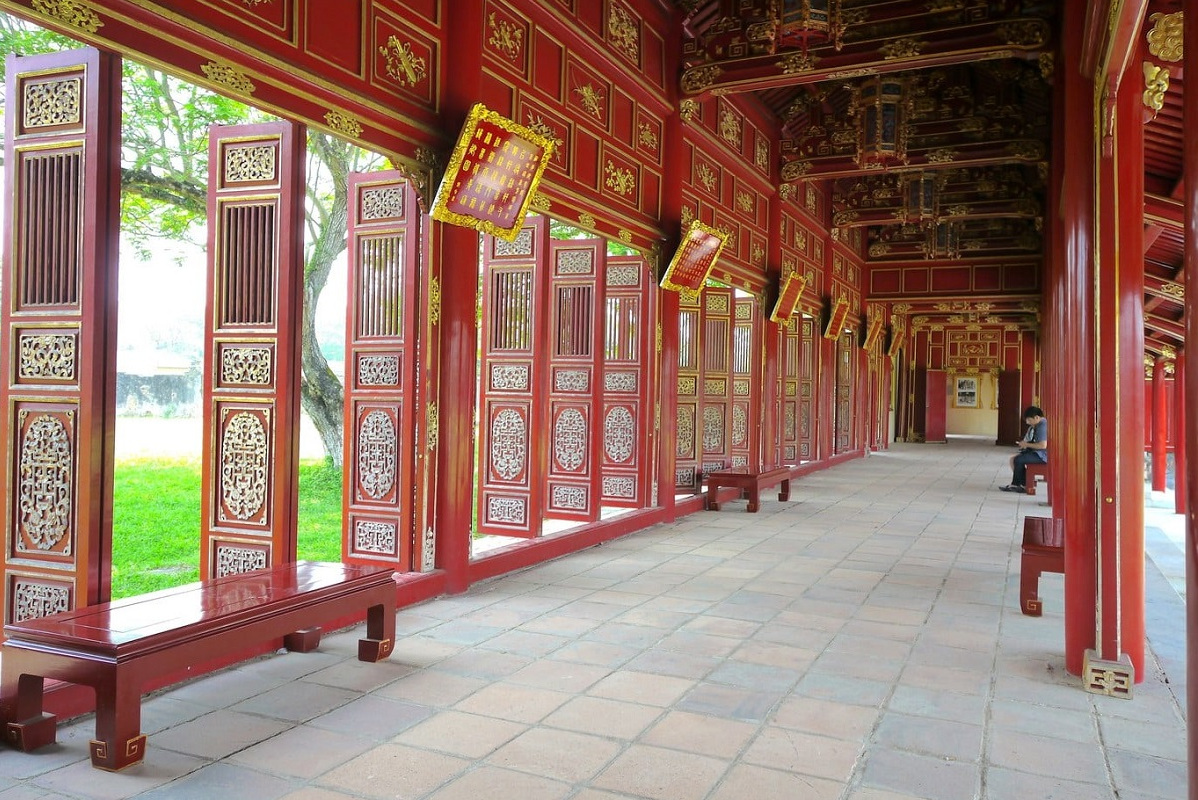
Eat, Drink and Shop
Restaurants
There is no daily-run restaurant in the Imperial City, and if visitors would like to dine out there, having to book a royal dinner. It’s possible to be accompanied with Hue royal court music (a Unesco intangible heritage), available upon request. This imperial dinner is served in a handful of restaurants around the city.
Outside of the walls, visitors have many choices to choose from, to have lunch or pre-dinner dishes. A few minutes drive away, market stalls provide a variety of local foods and speciality dishes, with a local price. Some amongst them were visited by Anthony Bourdain in his show series. There are many shopping opportunities there also. If you are looking for crispy pancakes or rice noodle soup in Hue’s own style, it doesn’t take much time to find a good place. Foodies love to come to eateries near Thuong Tu gate (of the Citadel) or safari in chessboard streets. Western options are available in some kitchens that are within walking distance from the exit gate. Highlights of each type are listed as following below:
-Market: Dong Ba market.
-Vietnamese and local food restaurants: Lac Thien Restaurant, Banh Khoai Hong Mai (specialize in rice pancakes), Bun Bo Mu Roi (Nguyen Chi Dieu St).
-Western or fusion restaurants: Les Jardin de la Carambole (Dang Tran Con St), Bistro 34 (Dinh Tien Hoang St), Café 51 (Le Huan St).
Coffee and Beverages
Some coffee shops are established in the Imperial City, near Thai Hoa palace. There, visitors can call for a cup of Vietnamese or western coffee. Cakes and other bakeries are for sale but with a limited option. Air-conditioning seating is in most venues, allowing the visitors to cool down and enjoy the brews. If you don’t like coffee, beverage stores and fridges are also many to buy a cold drink. Price starts from 15,000 VND and in the surroundings, visitors can sit stone chairs under the shaded trees.
Souvenir Shops
Souvenir shops are in the Mandarin Hall (behind Thai Hoa Palace), Dien Tho Palace, or near the exit gate. Visitors can find gifts, handicraft objects, paintings, statues, wood works, and more, to buy something to bring home. Many of which are high quality or locally-sourced. Selling price is unclear and touristy. History books translated in English or French are for sale as well, all written by local historians and archaeologists.
Imperial City of Hue Tour
Hue Day Trip from Da Nang
Taking a day trip is the best way to explore the Imperial City of Hue from Da Nang. The tour includes roundtrip transfer from the hotel, entrance tickets, lunch and a local knowledgeable guide. In addition to the walled city, visitors also have the chance to learn about Vietnamese history in 19th and 20th century in other places. There are Hue’s oldest Buddhist temple, tombs of the emperors and a dragon boat cruising on the Perfume River. It’s possible to choose to ride up to the top of Hai Van Pass or have a quicker ride to Hue via the tunnel.
Planning to visit Hue’s best attractions in one day? Contact us to know more tips and advice, and recommended tours for free. Our whatsapp number is +84968009827 and email is centralvietnamguide@gmail.com. If you only need an English-speaking, knowledgeable and friendly guide, text us to seek one quicker.

Hue Imperial City on Google Maps
Related Posts
Thieu Tri Tomb: The Peaceful Royal Tomb of Hue
Thieu Tri emperor tomb is an unpopular place to visit in Hue. From the city centre, it’s closer than Khai Dinh tomb, Minh Mang tomb and Gia Long tomb, and
Bach Ma National Park: Hiking, Trekking in Da Nang and Hoi An
Two best places for trekking and hiking in and near Da Nang are Son Tra mountain (peninsula) and Bach Ma national park. Which one is better is actually personal because these
Hue to Da Nang By Train: The Best Train Ride in Vietnam
Like Hanoi to Sapa, many travelers choose to get from Hue to Da Nang by train. Not just a cheap deal, the experience on this ride is definitely stunning and
Hue Royal Tombs: A Complete Guide and What is Best?
The Nguyen dynasty existed 143 years, from 1802 to 1945 with 13 emperors, but only 7 of them had their own mausoleum. On the map, all of these buildings are
The Hue Abandoned Water Park (Thuy Tien Lake Waterpark)
Recently, the Abandoned water park in Hue is known by travelers worldwide thanks to social media and online magazines, just like the Golden hands bridge in Da Nang. It was
Minh Mang Tomb Complete Visitor Guide
Minh Mang is the 2nd ruler of the Nguyen dynasty, the king of Vietnam from 1820 to 1840. His contributions to the country can’t be counted, including the largest territory Vietnamese
Tu Duc Tomb Complete Visitor Guide
Tomb of Tu Duc emperor is one of three most visited royal mausoleums in Hue. Two others are Minh Mang tomb – the tomb of Tu Duc king’s grandfather and
Hoi An or Hue: Which is Better?
Both Hoi An and Hue cities are in the middle of Vietnam, and they’re not far from each other (about 130 km). Therefore, for those who travel from north to
Lang Co Vietnam Travel Guide
Lang Co was a lovely backwater town nestled at the foot of spectacular Hai Van Pass for some decades. Not yet widely known because of the popularity of beaches in
Thien Mu Pagoda: Guide to Hue’s Most Famous Buddhist Temple
Thien Mu Pagoda is in the itinerary of any Hue city tours and day trips from Da Nang or Hoi An, because of its various interests. In short, it’s really
Perfume River Cruise: Guide to Best Boat Tour in Hue Vietnam
Perfume River cruise is a popular activity in Hue, Vietnam. Different from other sightseeing rides, this experience is by a dragon boat that was used only for the king formerly.
Tomb of Khai Dinh: The Most Unique Royal Tomb of Hue
Tomb of Khai Dinh is the last emperor mausoleum built in Hue and Vietnam. It’s famous for one-of-the-kind architecture and art that was never seen in the country at that
Hai Van Pass Da Nang: Map, Route, Weather, History, Tour
Truong Son or Annamite Range is the most dramatic mountain ridge in Vietnam. When it juts out into the sea, spectacular Hai Van Pass is formed. This amazing sculpture of
Hue Imperial City and Forbidden City
Located by the Perfume River, Hue Imperial City and Forbidden City are the 2nd and 3rd walls of the Citadel, seat of Vietnamese power from 1802 to 1945. These are home of luxury-decorated palaces,

















